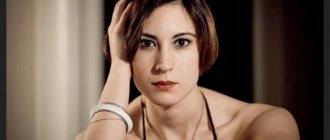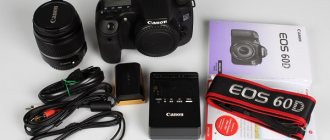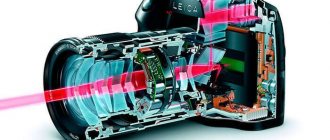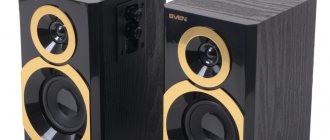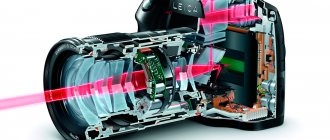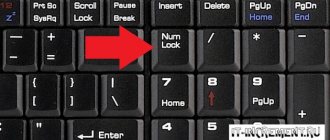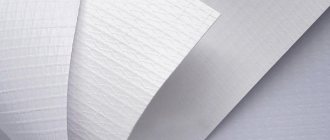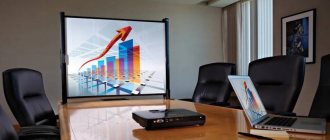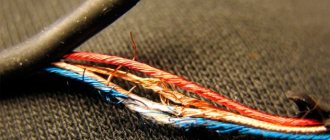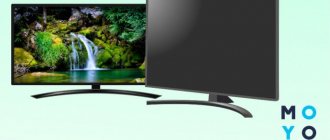Shutter speed units and terminology
Measured in seconds. Cameras display a number, for example, 50. This means the shutter speed is 1/50 s. Those. The camera shutter will open, the matrix will receive light for 1/50 s, the shutter will close and exposure will stop. If the camera displays, for example, 5”, then this means that the shutter speed = 5 s.
Distinguish between short and long exposure
Examples of fast shutter speed values: 1/1000 s, 1/2500 s (will be marked on the screen and in the camera viewfinder as 1000 and 2500, respectively). Example of a long shutter speed: 3 s (marked as 3 on the camera).
The boundaries of the classification of short and long exposures are very arbitrary, including depending on the subject. For example, when shooting a fast bird, a shutter speed of 1/500 s may turn out to be long - the bird will turn out blurry. It is important to understand the principle that terminology depends on the plot. If somewhere you come across a phrase like “make the shutter speed shorter/longer,” you’ll know what I’m talking about.
The shortest shutter speeds on modern DSLRs are 1/4000 or 1/8000 (in more advanced models). On mirrorless cameras in electronic shutter mode they can be set up to 1/32000 s. Such short shutter speeds may be necessary when shooting very fast objects or when using open apertures on high-aperture optics in bright sun. Long exposure is limited to 30 seconds, but there is a BULB mode in which the first press of the shutter button opens the shutter, and the second press closes it. To avoid movement, use remote controls. In other words, the long shutter speed is not limited in any way, and you can expose the matrix for at least hours. Such long shutter speeds are used for evening/night photography and special transmission of motion.
We haven’t looked at exposure yet, but I’ll still mention that shutter speed affects the amount of light received in direct proportion. The longer the shutter speed, the more light falls on the matrix; the shorter the shutter speed, the less light. When you increase/decrease the shutter speed by 2 times, the amount of light received increases/decreases by 2 times. For example, changing the shutter speed from 1/400 s to 1/200 s will double the amount of light received. This change is called an exposure stop. At this stage, it is important to understand that with a shorter shutter speed, the resulting photo will be darker, and with a longer shutter speed, it will be lighter.
Historical information about exposure.
As you know, the first cameras were far from modern ones in terms of the principle of obtaining a frame. Previously, there were no automated mechanisms to adjust camera parameters. The setting discussed was no exception. Because of this, it could be called a highly “human-dependent” parameter, because it was the photographer who adjusted this setting.
It was carried out by opening and closing the chamber lid, and the time for which the lid was removed is considered to be exposure. Often the parameter was calculated in minutes, since previously the light sensitivity of the fixing layers was too low. At that time, long shooting was a necessary measure, and this problem could only be overcome with the invention of photographic film.
Since those times, little has changed in the operating principles of this mechanism. The most important innovation is the movement of the element covering the photosensitive mechanism inside the camera body. Initially, it was just an internal damper, but now these are special curtains controlled by a shutter mechanism.
In all devices it works according to a roughly comparable scheme: when you press the shutter button, the curtains are pulled apart for a previously specified amount of time. The latter can be determined automatically or set by the user with shutter priority mode enabled ( S on Nikon cameras and TV on Canon).
How to adjust shutter speed in camera?
The camera sets shutter speed in two modes: manual (M) and shutter priority (S).
In other cases, it is calculated automatically by the camera. It is displayed on the camera:
- in the viewfinder;
- on the main screen;
- on the top screen
Shutter speed 1/320 on main screen
Shutter speed 1/320 in the viewfinder
Let me remind you that an integer number will be displayed, for example: 50, 640. This means that the shutter speed is set to 1/50 or 1/640. Or, if the number is displayed with a “seconds” icon, then the number is the shutter speed in seconds.
To learn how to change the shutter speed on your camera, refer to the manual. For example, on Nikon cameras, it is changed by turning the wheel under the thumb of the right hand.
Those. set the mode to M or S and turn this wheel to change the shutter speed. In S (shutter priority) mode, the camera will select the aperture automatically. In M mode, all parameters must be set manually.
If you scroll the wheel all the way to the left, the last value will be BULB mode, in case 30 seconds is not enough.
How is shutter speed measured?
Shutter speed is usually measured in fractions of a second when they are less than a second. For example, 1/4 means a quarter of a second, and 1/250 means one two hundred and fiftieth of a second (or four milliseconds).
Most modern DSLR and mirrorless cameras can operate at shutter speeds of up to 1/4000 second, while some can operate at much faster speeds of 1/8000 second or faster.
On the other hand, the longest shutter speed available for most cameras is 30 seconds. Longer shutter speeds can be used if necessary using external remote triggers.
Effects that can be achieved with exposure
It is clear that shutter speed can radically change the frame. As a result, you need to achieve an understanding of what kind of frame you want to get, whether shutter speed is important for these purposes and in such conditions. If important, then what? Over time, these questions will automatically flash through your head and your brain will produce a bunch of answer options, forming them from past experience and observation.
Let's now look at exactly what effects you can get.
Freeze motion
If the object is moving, then you can get a clear photograph using a short shutter speed, “freezing” it. The object can be anything: an athlete performing on stage, splashes of water, running animals, cars. In general, there is a lot of movement in our world) The main thing is to make sure that what you are shooting will look good in a “frozen” state.
Photo hack - no one bothers you to try several techniques when shooting the same thing, if time permits. And there will be plenty to choose from, and experience will be gained.
The dove just froze in the sky.
In this case, you can get a static photograph, which can look boring and even fall out of context. These shortcomings are offset by compositional techniques, for example, tilting the object. Or like in the example with the pigeon above - notice the feathers at the tip of the wing - they are blurred. Those. the shutter speed was slightly longer than required to completely freeze the movement. This adds a feeling of flight; the viewer understands that the dove is flying, and that this is not just a figurine.
The shutter speed must be selected depending on the speed of the object and the distance to it. We’ll talk about approximate recommended values below; you can use them as a guide. More accurately determined experimentally.
Dynamic water, for example, fountains, can look good in a “frozen” form:
Water drops can look interesting at very short shutter speeds:
The technique of freezing movement is worth keeping in mind, but I don’t recommend getting carried away with it - you can lose the atmosphere of what is happening and get only dry facts in the photo.
Motion Blur
The effect is exactly the opposite of the previous one. Our eye cannot see the result of prolonged exposure to light; it forms a picture frequently, i.e. conditionally - the shutter speed of our eyes is constant. The camera can “look” at the world with an eye wide open) In general, show us what we don’t see.
For example, above we can “see the wind” (vapor), which, when illuminated, brings zest to an ordinary cityscape. This is achieved through long exposure.
Moving clouds in the sky are a good option for blur. This way the photo can become more dramatic and voluminous.
It would seem that an ordinary static picture acquires dynamics due to slightly blurry clouds and treetops on the right. True, the wide angle, the converging perspective of the median strips on the road and twilight time contribute here.
The longer the shutter speed, the fewer small details will remain on moving objects (sky, water), all other things being equal.
Water, transport, sports, crowds of people, carousels - all are good candidates for using this technique. Try it, experiment.
Panning or panning
When using this technique, the object appears sharp , as if we are freezing it, and the background is blurred . Sufficiently long and medium shutter speeds are used. Conditional range – 1/10 – 1/200 s. The required shutter speed depends on the speed of the object and the distance to it.
The basic principle is to hold the camera tightly and very smoothly rotate it either with your hands or with your body so that the position of the object does not change in the frame. That is, if the car is in the upper left part of the frame, then when moving you need to rotate the camera so that it remains in the same upper left part. Due to the change in distance, it may change slightly in size, but there is nothing wrong with that - the shutter speed is not so long that trails will appear, and those that exist will only enhance the effect of the movement.
Cars are a classic example and an ideal target for such experiments. By the way, pay attention to advertising car brochures - very often you can see photographs with panning. The result is a very effective transfer of dynamics and the feeling that the car exists outside of time. But not just cars, you can try to photograph cyclists too)
Select the shutter speed experimentally:
- if everything turns out blurry, shorten it;
- if, on the contrary, everything is clear, lengthen it.
By the way, when selecting shutter speed, pay attention to the degree of background blur depending on the speed of the subject. Let me explain - in a frame with a bicycle (if it is assumed that this is not a flying road bike), the background should not be blurred into trash, as if the cyclist is rushing like a racing car. It will look unnatural. In the case of cars, the background may be more blurred.
Let's go back to cars again) It's very good if the background itself is beautiful and eye-catching, especially if we look at the car from an angle. And, ideally, you should not forget about the foreground - a clear division of the photograph into plans is always beneficial.
We are leaving towards the sunny horizon!)
In addition to cars, try filming running people, athletes, birds, running animals (with a predictable trajectory). But I note that this technique is not easy and requires proper skill and training. If it doesn't work out, don't be upset. The output of suitable personnel here is low. Just change the shutter speed and analyze the changes. And in the end everything will work out.
Evening and night photography
It can be nice to walk through the city at night and take pictures of this beauty. If you shoot portraits, then fast lenses with open apertures and cameras that are less noisy at high ISO will come to the rescue. The shutter speed, of course, will also have to be shortened, but to certain limits. Even if your model tries to freeze, it will still be difficult to shoot at shutter speeds shorter than 1/30 - there is a high risk of getting movement and blur.
When shooting evening landscapes, the approach is different. For a sharp photo, it is advisable to close the aperture. This means that much less light will reach the matrix. To learn about the relationship between the amount of light received and aperture values, go to the material.
Blurry landscapes are a frequent bane of photographers. If this problem occurs, be sure to look at the checklist!
Since there is less light, the mandatory attributes for evening landscape photography are long shutter speeds and a tripod. In the first example I will show water.
Blurred water and clouds
Water is generally a very multifaceted topic from a photography point of view. Long exposures can produce a calm, mirror-like surface. The camera allows us to see what we cannot see with our own eyes. The clouds are also blurred - exactly what we discussed in the motion blur effect. The principle is the same, only in view of the evening shooting we use long shutter speeds.
How long the exposure is will determine whether any detail will remain in the sky or water.
If it were not for the long exposure, even taking into account the light from the lanterns, the picture would have turned out to be severely underexposed (dark).
Another magical example of evening shooting is tracers and people. With long exposures, only those details remain that were in the same place for the maximum exposure time (light received by the matrix). For example, when shooting oncoming traffic, the main bright object is the headlights. If held for a long time, they will form tracers. If the shutter speed is not too long, then “ghosts” from car bodies will be noticeable.
The situation is similar with people - the longer a person stands still, the more clearly he will be captured. If a crowd of people moves, “ghosts” will appear. They can be barely visible at very long exposures, but at short enough we may be able to see individual people as if they were blurred. Again, this depends on the shutter speed, the speed of people moving and the intensity of the flow. Our task is to learn how to select shutter speed so that the flow is captured the way we want it.
In the example above, there are tracers from oncoming traffic on the left, and a blurry guy on the right near the bench. At the same time, the rest of the company on the bench turned out to be clear, which means the exposure was not too long.
Photography basics: shutter speed, aperture, depth of field, photosensitivity
Introduction
People often purchase digital SLR cameras in pursuit of image quality, but have no idea about the technical aspects of shooting.
This mainly applies to those who, before DSLRs, held exclusively compact cameras in their hands and used automatic modes (which, by the way, are very advanced in modern cameras). As a result, some become frustrated with the camera and photography in general, while others are patient and try to master the intricacies of photography in order to unlock the full potential of a camera with a full (or almost full) sensor. Initially, I planned to write one article, but along the way I realized that the volume was too large and decided to break it into several parts. In this chapter I will consider such concepts as shutter speed, aperture, depth of field and photosensitivity, how these parameters affect the shooting result. Next up is an article about the types and parameters of lenses, working with flashes and tips for shooting in various conditions.
Exposition
Exposure is the amount of light exposed to the photosensitive sensor.
It is formed by two parameters - shutter speed and aperture - which are also called “exposure pair”. The exposure must be of such a value as to provide the necessary amount of light to form an image on the sensor with a given light sensitivity (denoted by ISO, for example, ISO 100, ISO 800, etc.). The higher the sensitivity of the matrix, the lower the exposure should be. In automatic and semi-automatic operating modes, the camera calculates exposure using a special sensor and other system parameters.
To convey the entire light picture of the scene, it is necessary that the dynamic range (minimum and maximum perceived brightness) of the sensor be greater than the range of the scene being photographed. If this is not possible, the exposure is chosen based on the fact that the most important part of the frame is correctly processed.
Rice. 1. From left to right: underexposure, normal exposure, overexposure
Excerpt
Shutter speed is the time for which the camera shutter opens to expose the sensor to light.
Not all devices have a shutter in its full form; in most compacts and various types of mobile phones, its role is played by electronics - the so-called “electronic shutter”, the shutter speed in this case is determined by the time between zeroing the matrix and reading information from it. There are also hybrid shutters. The most common type of shutter is a curtain-slot shutter, in which two curtains move. When cocked, the sensor is covered by the first curtain. When the shutter is released, this curtain opens the way for light to flow. After the required time has passed, the gap is closed with a second curtain. Starting from a certain shutter speed, the shutter speed is no longer sufficient and the frame begins to be illuminated by a gap formed by two curtains. The shorter the shutter speed, the smaller the gap. This feature creates two problems: distortion of fast-moving objects and problems when working with flash.
Since at short shutter speeds the exposure (exposure) of the sensor occurs unevenly, the shutter speed when working with flash can only reach the value at which the frame area is completely exposed at the time of shooting. This value is called flash sync speed. In principle, it is possible to work at a shorter shutter speed, while the flash generates a series of light pulses, but its power decreases.
Diaphragm
Generally speaking, the aperture is not a necessary element of the camera, so in very simple point-and-shoot cameras and mobile phones it is simply absent.
Espopara in them is not a couple at all; it is formed by one single parameter - the shutter speed of the electronic shutter. The diaphragm in the direct sense is a partition; its value is inversely proportional to the amount of light transmitted and is denoted as a fraction 1/k, where k are standard coefficients. In practice, only the denominator of the fraction is usually indicated. For example, if we set the aperture f/2.8 on a lens with a relative aperture of 2.8, this will mean that the aperture on this lens will be completely open and will not participate in shooting.
It would seem that if both of these parameters are responsible for the same thing - the amount of light falling on the matrix - is it not possible to use one? Can! But the aperture affects another very important parameter: the depth of field of the imaged space (or simply DOF).
Rice. 2. Aperture operation
DOF
Let's try to figure out what affects increasing or decreasing the aperture other than the amount of light transmitted.
The larger the aperture value (smaller physical opening), the greater the depth of field, that is, the area of precise focus around the subject being photographed. When the aperture is open, the background blurs - this effect is most useful in shooting portraits to focus attention on the face. With a closed aperture, they shoot landscapes in which it is necessary to clearly display the entire area of the frame.
I will not go into technical details, give graphs and formulas, just remember a few conditions that affect the depth of field:
1. Diaphragm. The larger its value (smaller physical hole), the greater the depth of field. 2. Lens focal length. The longer the focal length, the smaller the depth of field. 3. Distance to the subject. The closer the object, the smaller the depth of field.
Rice. 3. Aperture 2, shutter speed 800
Rice. 4. Aperture 4, shutter speed 200
Rice. 5. Aperture 8, shutter speed 50
The pictures clearly show that with an open aperture the depth of field is shallower than with a closed aperture. Also note that in order for the exposure value to remain unchanged, you also have to change the second parameter of the exposure pair - the shutter speed (when the aperture changes by two stops, the shutter speed changes 4 times).
CROP factor
There is a good article on Habré about the crop factor and how it affects the depth of field, I recommend reading it.
In short, the Crop factor is how many times the sensor area is smaller than a standard 35mm frame. It is precisely because of the small size of the sensor that it is almost impossible to achieve a small depth of field in compact digital cameras, except for macro photography. Therefore, photographs from point-and-shoot cameras look less voluminous, especially portraits. At the same time, sometimes it is impossible to see the difference in landscapes.
Light sensitivity and noise
Perhaps the most hotly debated issue in photographic circles is matrix noise.
A digital camera sensor is made up of many small sensors called pixels. They convert the amount of light that hits them into an electrical signal. The light sensitivity of the camera matrix can be considered as the amplification factor of this electrical signal. Since not only the useful signal is amplified, but also the matrix’s own noise, increasing the sensitivity of the matrix leads to an increase in the noise level. Noise is most noticeable in dark areas of the frame due to the lower signal-to-noise ratio of dimly lit pixels.
In practice, you should always strive to shoot at the lowest possible sensitivity from the main range of the device. It will be limited by the lighting of the scene and the maximum possible exposure time.
The larger the area of each individual pixel, the greater the amount of light that falls on it per unit of time; physics cannot be fooled. Therefore, I never tire of explaining to people that they are wrong when the main criterion for choosing a camera is the sensor resolution. In fact, increasing the resolution of the matrix while keeping its physical size unchanged is rather harmful! This is nothing more than a marketing ploy by photographic equipment manufacturers.
All modern digital cameras perform some image processing before it reaches the user, including noise reduction. If this feature is used wisely, the result actually becomes better, but in a megapixel race, such processing begins to have negative consequences on the shooting result, which manifests itself in “blurring” of the image, lack of sufficient sharpness and detail.
The lowest noise level today is provided by cameras with a full-size sensor (35 mm or more), and this happens precisely because of the large pixel area.
Examples of using shutter speed for different subjects
Let's look at a few typical cases in which different shutter speeds are used.
Rice. 6. Short shutter speeds are used for shooting dynamic scenes; they allow you to “freeze” movement.
Rice. 7. Long shutter speeds, on the contrary, “smear” the movement, which sometimes allows you to achieve an interesting result
In general, if the subject is banal and does not require special conditions, when shooting handheld you should try to keep the shutter speed no longer than 1/f (lens focal length). For example, for a 50 mm lens, you should try to use shutter speeds faster than 1/50 s.
Many modern lenses (and even some bodies) are equipped with image stabilizers, but, unfortunately, I did not have to use them, so I cannot say how effective they are. Theoretically, this feature allows you to shoot at longer shutter speeds without the appearance of characteristic image blur (popularly called “shaking”).
Rice. 8. Blurred images with long shutter speeds
To be continued…
How to choose shutter speed?
Choosing the appropriate shutter speed can be difficult. To begin with, I will describe the basic algorithm that you should focus on.
- Is shutter speed important in principle for the subject being filmed? Maybe at any shutter speed you will get approximately the same results, or will its incorrect value ruin the frame? If the first option is ours, then we turn our attention to other parameters. For example, on the diaphragm. Read about choosing aperture and its recommended values for specific scenes here.
- Determining how the frame should look . We build the final look of the photograph in our heads. Let's focus on the effects presented above. And, based on this, we select a suitable shutter speed from the approximate range.
- We identify problems that need to be mitigated with endurance . In some situations, by adjusting the shutter speed, we are not chasing the effect in the frame, but are leveling out the problems that arise during shooting. For example, when shooting with an open aperture using high-aperture optics in bright sunlight, you will have to set very fast shutter speeds to get the correct exposure. There is no artistic effect achieved here - you just need to get the frame with the correct exposure.
- We take sighting shots, analyze the results and change the parameters . And so iteratively in a circle until we get the desired result.
The more experience you have, the faster and easier it will be to complete step 4.
When to use what shutter speed?
For clarity, I compiled a table describing frequently encountered situations. It will help you decide when to use a long shutter speed and when to use a short shutter speed.
I note that the values I indicate are approximate. There are no dogmas here, each case is unique. Therefore, treat these numbers as basic ones, from which you can build on and select the appropriate value.
| Situations | Description and shutter speed ranges |
| Little light. | Whether it’s a dark room or twilight, we lengthen the shutter speed so as not to get blur and movement. We focus on the formula: the shutter speed should be no longer than 1/EGF. If you don't know the equivalent focal length and crop factor, here you go. If the subject is static, then we simply try to get a sharp frame without movement at a minimum ISO. In this case, we select the aperture to suit the subject. As a rule, we are talking about shutter speeds around 1/25 – 1/50. If there is movement in the frame, then we use fast optics and an open aperture, raise the ISO and select the shutter speed so that there is no blur. Don't forget about an external flash - it can help out indoors. |
| Exposure is the main remedy in the fight against smearing and movement. | Don't forget about the formula: shutter speed is shorter or equal to 1/EGF. We shorten the shutter speed if it is not possible to take a clear photo at values that are not too long (for example, 1/30). |
| Night city photography. | Depending on the illumination, the values can vary approximately as follows: 1/10 - 15 s. Be sure to use a tripod and don’t forget to turn off VR (vibration reduction function), if available. |
| Evening portraits. | At shutter speeds longer than 1/20, even with short-focus optics, it is difficult to obtain clear images. Advice: in the evening we do not use long-focus optics (105 mm or more). Even 85mm can be left at home. Try fast 50mm and 35mm lenses (with VR stabilization) and shoot more atmospheric portraits of a person in the city, rather than just a person with a blurry background. This will allow you to use longer shutter speeds. It's hard to make a person freeze anyway, so long shutter speeds won't work for us anyway. If even with an open aperture the frame turns out to be underexposed, raise the ISO. And we definitely shoot in RAW - later it will be possible to pull out the dark failed details and partially level out the noise that appeared due to the high ISO. If you have an expensive full-frame camera, then it will be much easier to shoot - you can raise the ISO too much without the risk of getting low-detail soap with poor color, shorten the shutter speed, and it’s easier to use long-focus optics. And it’s easier to draw details in RAW. In general, for such shooting, a full frame frees up your hands. |
| Long-focus optics. | Again, the rule about 1/EGF is the same. If you choose optics, give preference to stabilized options (with VR). The motor compensates for vibration, and it’s easier to shoot handheld at longer shutter speeds - there’s less risk of getting shakes. Example: you are shooting birds with optics with a 200 mm DF on a crop lens. On Nikon the EGF will be 300 mm. This means that a necessary condition for shooting is to use a shutter speed of 1/300 or faster. Please note that the condition is necessary, but may not be sufficient, because We film not static, but the movement of birds. For fast flight, 1/300 will probably not be enough - 1/800, 1/1000 or shorter is better. |
| Excess light. | We compensate with closed apertures and short shutter speeds. What if we are shooting a portrait in the desert under the scorching sun? And at the same time we want to get strong blur and open the aperture to 1.4. A? It will still be overexposed. Ultra-short shutter speeds come to the rescue - 1/2500, 1/4000 and even 1/8000 s. By the way, not all cameras support a shutter speed of 1/8000 (we are talking about a mechanical shutter). Some consider its presence a sign of professionalism of the camera. In any case, this makes it easier to work with high-aperture optics in situations like in the example. |
| Shooting with wiring. | Approximate range – 1/10 – 1/200 s. For fast moving cars and birds, try starting with the range – 1/80 – 1/160. Cyclists, other athletes – 1/40 – 1/60. If the image still comes out clear, zoom in to 1/20 - 1/40 or more extreme values. |
| Water, clouds. | For freezing, we try shutter speeds of 1/500 and shorter. Need a water flow with details? Try ¼ - 4 s. Need a blurry water stream with no details? Try > 4 s. The transmission of cloud motion is highly dependent on their speed. Movement in very strong winds will be noticeable at a shutter speed of 1/15 or 1/10. Usually, a beautiful blur is obtained at 3–15 s. If you want to get an abstract photo, where water and sky turn into a monochromatic substance without details, we try the range of 20 - 30 s and more. |
| Tracers. | You can try sighting for 10 – 30 s. If there is a large dense flow of cars, you can try for 3 – 5 minutes. If the flow is small, then the tracers will be almost invisible. |
| Sport. | The more dynamic, the shorter the shutter speed) Everything is individual, I will not give specific values. It all starts at about 1/200 and shorter. Let me draw your attention to one detail - the speed of the subject being photographed relative to the photographer changes. For a car rushing past, the shutter speed should be much shorter than for the same car that we are filming from afar, when it is moving towards us or away from us. If there is not enough light and the plot allows, you can use this fact. |
What is shutter speed
The length of time a photograph is taken is called “exposure duration” or “shutter speed.” If you haven't chosen full auto mode, you should know how to select the shutter speed on your camera and how to adjust the shutter speed. If you select the wrong value, the image may appear blurry. This problem occurs when a tripod is not used.
Shutter speed is the time during which the shutter of our camera will remain open, i.e. a device that transmits light to the sensor. You could say that a camera's shutter speed is basically the time it takes to take a photo. What else does camera shutter speed affect? In addition to exposure, it affects the fixation of moving objects.
How is shutter speed indicated?
Shutter speed designation S (shutter) or Sv (shutter speed value). The flash sync speed is usually indicated on the lightning shutter speed dial. Shutter priority mode for a Canon camera is indicated by the letters Tv. Some sophisticated automatic cameras with dedicated flash have a high-speed sync function, which uses a series of flashes at specific times to illuminate each area of the frame that is above the flash sync speed. This mode is not used very often as it reduces the flash range (every part of the sensor is exposed to a very weak flash), and often does not work with some flash automation features.
IMPORTANT! A photo taken at a speed faster than the sync speed is usually of poor quality.
How to adjust shutter speed
It can last from a very small fraction of a second to several seconds or even minutes. The shutter speed range is measured as follows: 1/5, 1/80, 1/100, 1/500, 1/1000, etc. Most cameras support a shutter speed of 1/4000 second. The slower the shutter speed, the more light the lens accepts. The correct shutter speed depends on the amount of light in the frame. When there is little light, the shutter speed needs to be increased.
What happens when shutter speed decreases
Moving objects appear clearer. If you and your lens are relatively still and aren't using flash, you'll want to make sure your camera's shutter speed is long enough to avoid blurring from camera shake. The basic rule is that the shutter speed should be at least equal to the focal length response (35 mm). For example, a 50mm lens should be used at a speed of at least 1/50th of a second; A 200mm lens should be used at a speed of at least 1/200th of a second. For smaller formats, use a 35mm equivalent focal length as blur will increase.
How to correctly set the shutter speed on your camera
Place and secure the camera on something sturdy (such as a tripod). This eliminates camera shake, especially when using a timer or auto button to activate the shutter. When taking a long exposure photo, the only limitation is the movement of the subject. The maximum shutter speed should be inversely proportional to the effective focal length.
Summary
Shutter speed is the time during which the matrix receives light.
It often greatly influences the perception of the frame; it can be used to create various effects and solve problems. It is one of the 3 building blocks of exposure, along with aperture and ISO. And it is important to learn how to identify it correctly.
Take the advice and approximate values from this material as a starting point and try, try, try! If you use automatic mode and have never set shutter speed manually, start using S or even M modes. See how much more freedom they give. Based on experience, the brain itself will then offer the necessary values. Success in creative work!
